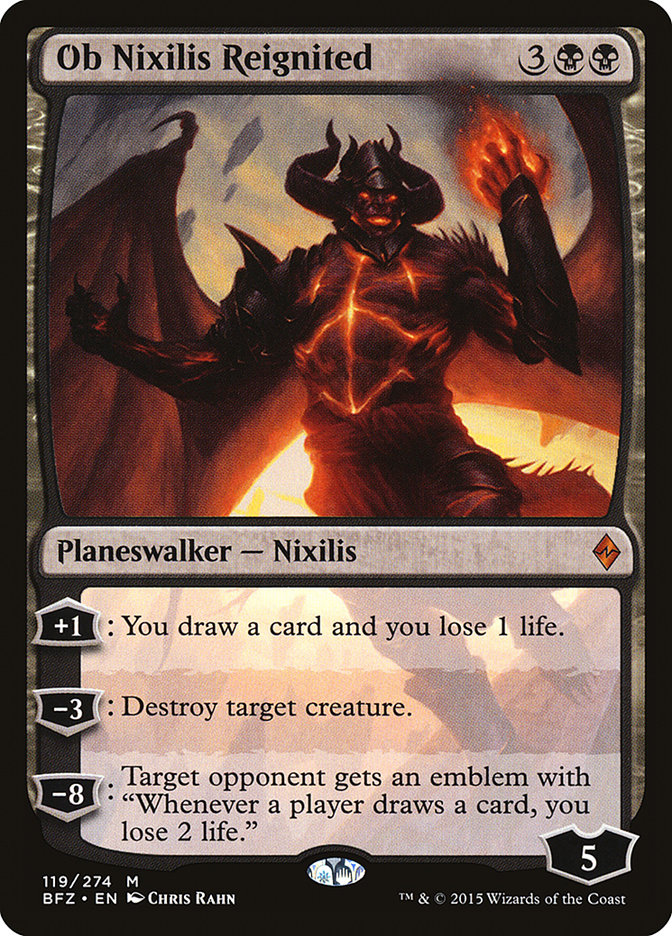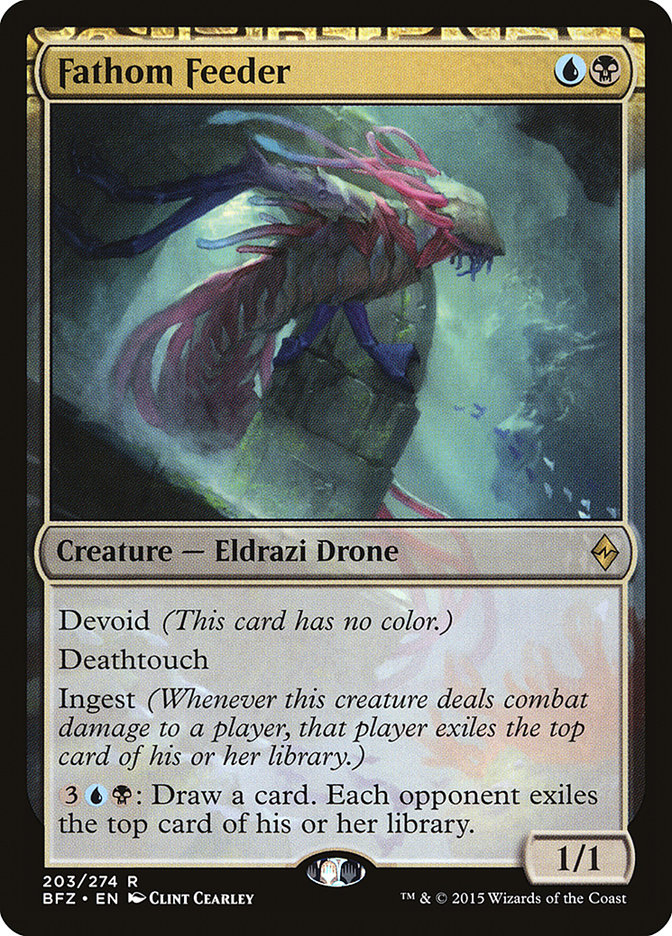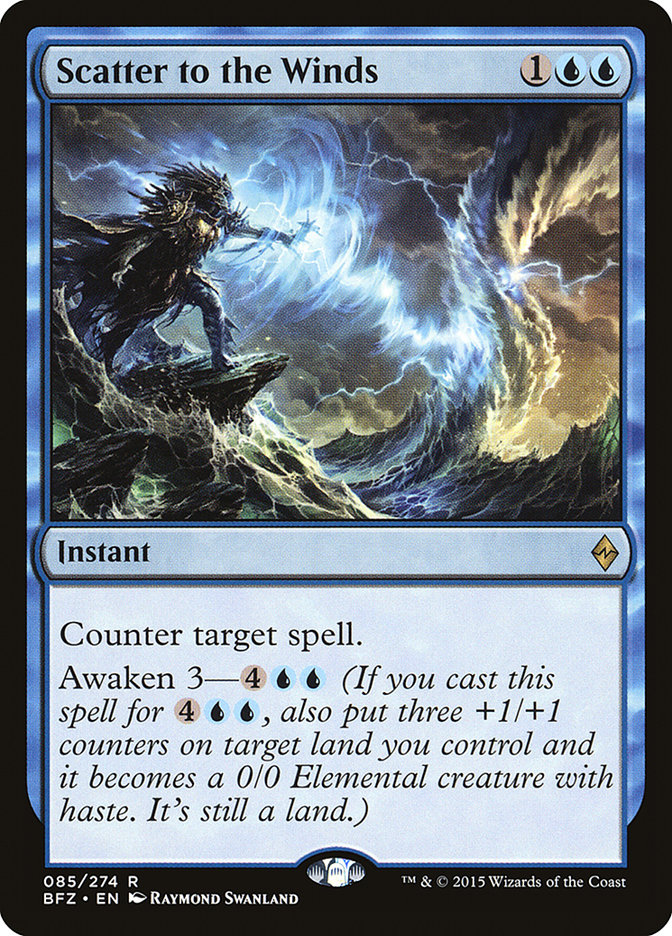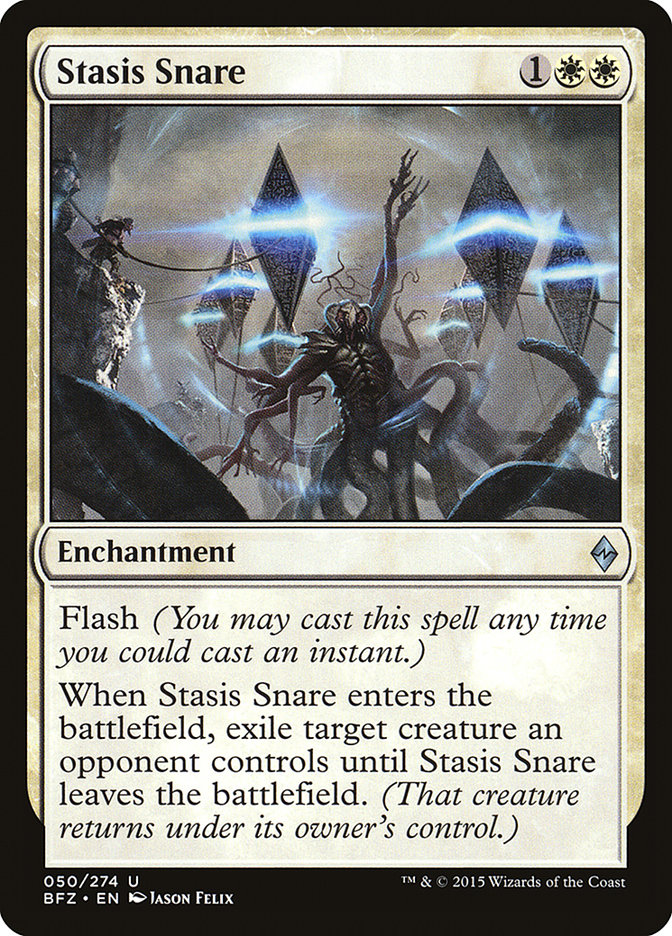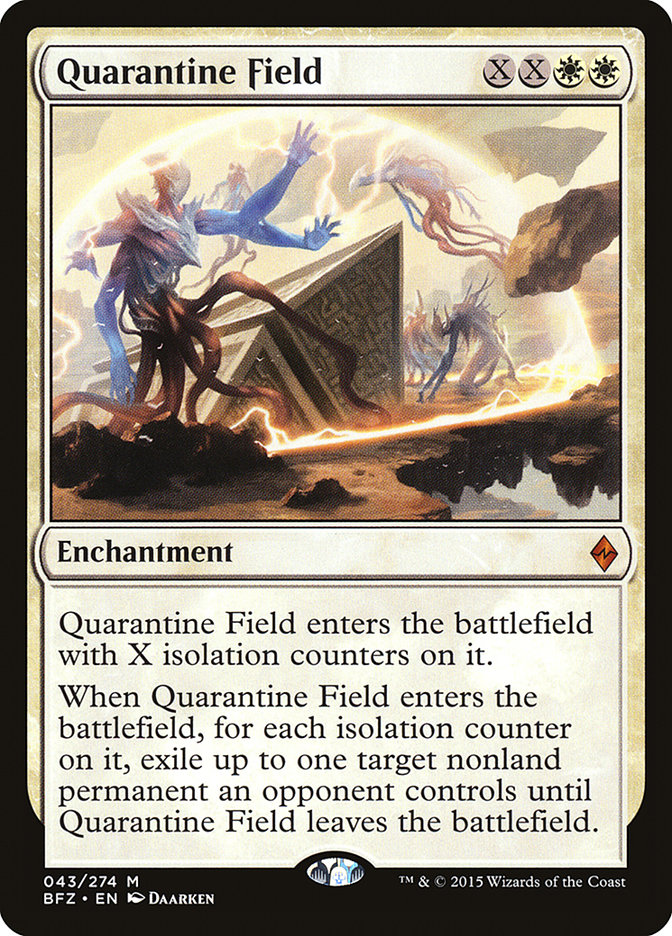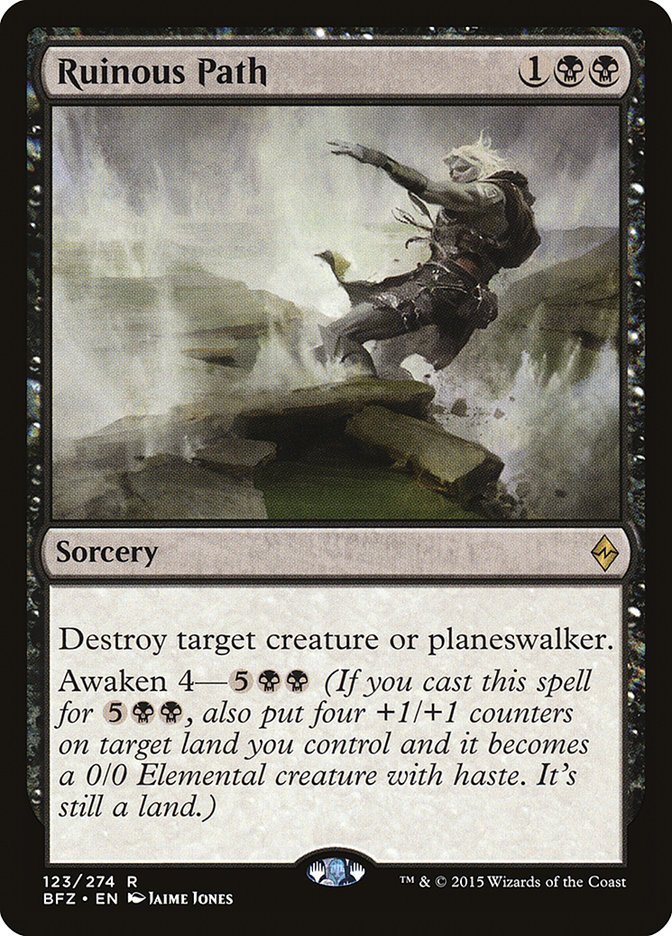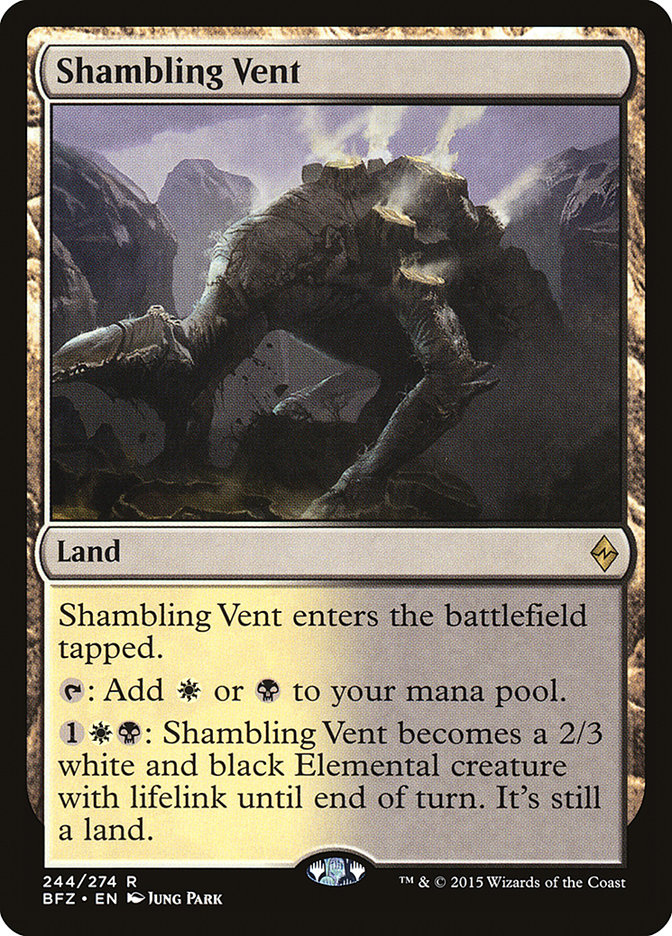The Battle for Zendikar is almost here!
The months of September and October are relatively uneventful in terms of competitive events, so most of my attention has been focused on fixing my sleep
schedule while returning to work. Teaching is awesome, Magic is awesome, and now it’s time to professionally combine the two tasks with the upcoming
release of BFZ. You all know I don’t give ten, twenty, or even ninety percent when tackling a new format after rotation. You always get one-hundred percent
from me, and this will be no exception.
Today we are going to examine a robust list of control cards that we may sleeve up in the near future. Is it time for an Esper Dragons revival? Maybe. If
there weren’t any fantastic planeswalkers printed then I’d be more inclined to go back to the original format breaker I developed prior to the release of Dragons of Tarkir. But when they spoiled Ob Nixilis Reignited I was sold. He comes in and flat-out murders a creature and with no catch! Gideon
Jura was better, but this guy gets the job done as well.
When Gideon Jura was a Standard superstar, I used his second ability far more often than the others. Ob Nixilis Reignited will enter the battlefield each
time and remove a threat with extreme prejudice. If you have managed to stabilize the board prior to casting the new planeswalker, then it immediately
draws you cards with very little drawback. If we want to play him in a control deck, I believe we have to avoid the Dragon strategy altogether. There are
enough solid planeswalkers that produce regular threats in the new Standard, so it creates a task to perfect the numbers. The bulk of our spells will have
to cost two or three mana in order to produce a curve that allows us to play a powerful planeswalker on turns 4 and 5. The board has to be clear for
Gideon, Ally of Zendikar or Sorin, Solemn Visitor to survive the early turns. The format is slowing down significantly with the rotation of Elvish Mystic
and the mono-red army, which gives our heroes some breathing room.
So let’s discuss the new cards that we may use to start off the exciting Battle for Zendikar Standard, shall we?
The Top 5
#1:
The number one draft pick of the Battle for Zendikar class is clear. Big Ob comes onto the battlefield at the discounted price of five mana, which
is a relief for this control mage. Making it six mana and slightly better (or four mana and worse) hurts the control cause more than you’d think. Four mana
is a slot that is absolutely full, so adding a five-mana planeswalker to the mix is perfect. He can kill a creature upon entering the battlefield, which
inherently means it has self-protection, and I expect that removing the threat on the battlefield that can deal Ob Nixilis Reignited lethal damage will be
the most common use of the card.
The +1 ability is very powerful, and with a slower format I can see Ob Nixilis Reignited dominating midrange and control matchups with brute card
advantage. The life loss from the +1 will have to be offset by his buddy Sorin, Solemn Visitor and Ojutai’s Command unless one of the remaining cards that
hasn’t been spoiled yet replenishes life total. The ultimate on Ob Nixilis Reignited is not going to be a big player in competitive Magic, but does give a
solid win condition in the control mirror when the game goes long. The initial control list I’m releasing only has two copies of this card in the maindeck,
but I can easily see another added in the future. I tend to stay away from three copies of the same legend, but because it destroys a creature on the
battlefield immediately, it is at worst another removal spell after the old Ob Nixilis Reignited draws a card.
#2
This card earns the number two spot and is the card I’m most excited to play with. This isn’t Baleful Strix, but in Standard it may play a similar role. It
kills the biggest, baddest creatures out there and has the upside of drawing cards later in the game with unused mana. The two-mana slot is always the most
suspect in recent control decks. It used to be easy, jamming four Mana Leaks and four Doom Blades in and calling it a day. We have to get pretty creative
these days to be effective, and Fathom Feeder definitely falls into this category. With the Esper strategy, we have Ojutai’s Command to return this little
guy if no Jace, Vryn’s Prodigies are available. All control decks with white mana should also have a few copies of Arashin Cleric, so that gives us a
plethora of two-drops to target with the four mana counter.
One thing to keep in mind: Ultimate Price was already quite bad, and it is only getting worse! It doesn’t deal with any of these Devoid creatures, and the
multi-color creatures like Mantis Rider and Siege Rhino are still running rampant! I know we aren’t getting Doom Blade back, but I hope that Gideon’s
Reproach isn’t the next best option from BFZ after Fathom Feeder.
As far as the impact Fathom Feeder has on Standard and control, it’s too tough to tell at this point. It’s a fragile creature and the amount of ground
attack in the format can vary, but I predict the Abzan machine will still be in full force after rotation. If Abzan is still strong, then Fathom Feeder
could be a major player in the control strategy. The potential card advantage at instant speed attached to the little creature is too attractive to pass
up. Let’s get Fathom Feeder in the initial control list and see where it goes.
#3
Our new Dissolve. In my last article, I mentioned the ease in
which double blue will be achieved in the early turns with the new manabases. The example I used was Dissolve, but I meant the next incarnation of the
control staple, which happens to be not too bad. I knew they wouldn’t leave us with Cancel, but it wasn’t going to get much better than this. I’m not sure
if I like Dissolve or Scatter to the Winds more. Scatter to the Winds will require a brand new gauntlet and format of testing to determine how often we
have time to make threats with our countermagic. If the format does slow down to the level I anticipate, then the new counterspell becomes a possible
two-for-one in the lategame. That makes it much stronger than Dissolve. In the first few weeks of the new Standard we are all going to miss scrying, but
luckily the new mulligan rules will help alleviate those first turn jitters we have when keeping the land-light hands.
Don’t be fooled by its competitor, Horribly Awry. Horribly Awry at first looked like an absurdly powerful card. When I reread it and realized it can only
target creatures, I became deeply upset. If it was five or less, or even Essence Scatter, I would have been very satisfied. The inability to hit Dragons
really hurts the effectiveness of this card. If control becomes popular, then this will have very few targets especially. I can see this coming in against
Abzan or other aggressive decks that utilize Den Protector/Deathmist Raptor, but I’m not a fan of including it in the maindeck at this point. Luckily,
Scatter to the Winds is an exciting card, and I look forward to seeing it in action soon.
#4
I really like Stasis Snare, but I’m not the biggest fan of Quarantine Field. The flash attached to Journey to Nowhere makes Stasis Snare a very exciting
card and a must-include in any white control deck. It deals with creature-lands, Dragonlord Ojutai, dash creatures, and all of the other possible perks of
removal at instant speed. Depending on the prevalence of planeswalkers in Standard, we may play more copies of Stasis Snare than we do of Ruinous Path.
They all fall into the same three-mana curve, so we have to make tough decisions when tuning our removal suite at the end of the day. I’m still holding out
for a two-mana removal spell better than our current options, but we’ll still survive if that doesn’t happen. Stasis Snare also gives U/W Control a better
chance in a new, dangerous world. In Esper Land, we still have Utter End, which provides a much better effect for one more mana. We’ll find out soon enough
if the difference between three and four is too great for the exile effect.
Quarantine Field is a pretty sweet card with flavorful design. It rewards us for having way too much mana and can really demolish an opponent when they
seem to have the game in hand. The biggest complication is the existence of Ugin, the Dragon Spirit, which seems to get better all the time. For now I
think it’s best to put Quarantine Field on hold and focus on removal that answers threats at instant speed.
#5
The reason this trio came in fifth is because I already spent some time explaining their application last time I chatted with you all. Ruinous Path will
start as a four-of in our control shell, but it may surrender a copy or two to Stasis Snare as I discussed earlier. I’m going to stick with the weaker
cousin of Hero’s Downfall as an answer-all before trying to go all-in for simple efficiency. I’ve gone into lengthy discussions on why Hero’s Downfall was
always a four-of in control decks, and the same logic will apply to Ruinous Path.
Ruinous Path is not a powerhouse of a card or effect and it doesn’t win you the game on the spot or provide you with an auto two-for-one. What Ruinous Path
does is deal with the threat at hand and, in conjunction with other cards, stabilize a board while leading to victory. Murder was printed a few years ago,
and now that they’ve attached a planeswalker removal clause to it, we can’t shy away. This effect, alongside some answer for enchantments and artifacts,
will help us bring a well-oiled machine to a format rocked by uncertainty.
Gideon, Ally of Zendikar is the workhorse of future control decks. Now that we have our own Xenagos, the Reveler, it’s time to get to business. It doesn’t
add loyalty to make threats, but with other powerful planeswalkers to defend it, we can really create stable boardstates. I envision our Ally tokens doing
a lot of chump blocking as we get set up, but that’s fine. It reminds me of the role Elspeth, Knight-Errant played in control once upon a time. Even though
Gideon, Ally of Zendikar doesn’t have the same power that the similarly costed token producer of old had, he should be able to get the job done.
Shambling Vent is a card I’m tossing in with number five because it doesn’t require much analysis. It produces two colors we need, animates as a creature,
and has lifelink. Of course I wish it had three power to combat a world of three toughness beings, but beggars can’t be choosers. Get a playset and throw
them in any B/W or Esper shell you create.
Honorable Mentions
There are a few spells that caught my attention but won’t be playing for the first team right off the bat. Ulamog’s Nullifier intrigues me as a Mystic
Snake-style card but can’t be played unless everyone is getting their exile on. It may be a worthy adversary in the control mirror, but right off the bat,
we have to play it safe. The two-card draw spells that caught my eye were Painful Truths and Ugin’s Insight. Since we have a ton of delve card draw spells
that are banned in other formats, my yearning for lategame card advantage doesn’t exist. These spells are sweet, but none are as good as Dig Through Time
or Treasure Cruise. Blighted Cataract is the land that made the decklist below and has card advantage built in, but it is only a one-of. I didn’t include
it in the list above because I’m not going wild with colorless lands in this first edition of Esper Control. The sixteen lands that go into this great
manabase require a great deal of basics, and we have to find room for our four creature-lands as well. The only other card that is worth mentioning for
Esper Control at this point is Gideon’s Reproach. If the format is fast, then we will simply have to play this card (unless another option presents
itself). Celestial Flare is a Magic Origins reprint and another option, but even with great mana we don’t want to fetch up basic Plains that
early.
With all the new and old cards in consideration, here is the list I came up with to start it off this year. Sleeve it up and give it a try!
Creatures (5)
Planeswalkers (7)
Lands (26)
Spells (22)


